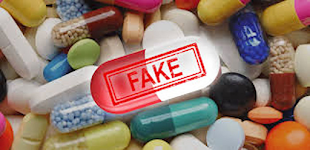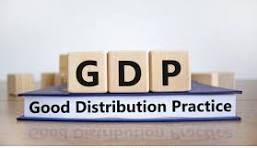Tackling the menace of fake drugs in India
- Ganadhish Kamat
Menace of fake drugs is not new in India. Reports of seizure of fake drugs and arrest of culprits keep appearing in the news at periodic intervals from various parts of the country. Last few days I came across many such articles about seizure of fake medicines in various parts of India. Some prominent cases include -
- 25 crore fake cancer drug case busted by Delhi police where the suspects filled empty vials of international and Indian brands with antifungal drug fluconazole.
- Case of spurious medicines such as Ultracet, Amaryl, Gluconorm, and Defcort tablets manufactured in two UP cities (Gaziabad & Shamli) cracked again by Delhi police.
- Case of fake medicines (mostly antibiotics like cephalosporins and amoxycillin-clavulanic acid) manufactured by Meg life science (a fictitious company with headquarter in Sirmaur district of Himachal Pradesh) containing chalk powder and starch valued at Rs 33.3 lakh seized in Telangana by the Drugs Control Administration.
- Another case busted by Telangana DCA of a drug manufacturing unit in Uttarakhand that was producing and selling counterfeit drugs containing chalk powder with labels of reputed pharmaceutical companies such as Cipla and GlaxoSmithKline.
As per WHO report published in 2017, around 10.5 percent of medicines sold in low and middle-income countries, including India, are substandard and falsified. The falsified medicines may contain no active ingredient, wrong active ingredient or less amount of the active ingredient. They may contain innocuous substances like starch or chalk powder in place of the drug or may even contain substance which are toxic in nature. These medicines are often produced in poor and unhygienic conditions by unqualified personnel, and may contain unknown impurities and contaminants including microbial contamination. As these are designed to appear identical to genuine product, they are difficult to detect. The key findings in the WHO report include -
- Substandard and falsified medical products may cause harm to patients and fail to treat the diseases for which they were intended.
- They lead to loss of confidence in medicines, healthcare providers and health systems.
- They affect every region of the world. However the proportion is higher (around 10%) in low- and middle-income countries.
- Substandard and falsified medical products from all main therapeutic categories have been reported to WHO including medicines, vaccines and in vitro diagnostics.
- Anti-malarial and antibiotics are amongst the most commonly reported substandard and falsified medical products. This may contribute to antimicrobial resistance and drug-resistant infections.
- Both generic and innovator medicines can be falsified, ranging from very expensive products for cancer to very inexpensive products for treatment of pain.
- They can be found in illegal street markets, via unregulated websites through to pharmacies, clinics and hospitals.
This article is focused on counterfeit or falsified drugs as it is a serious concern for the genuine manufacturers as well as the government because of the serious risk it poses to the people and also loss of revenue and disrepute it brings to genuine manufacturers whose medicines are counterfeited. (Please read my article Improving Quality of drugs in India https://pharmaqsutra.blogspot.com/2021/06/improving-quality-of-drugs-regulatory.html for addressing substandard drugs).
Government regulatory agencies as well as the manufacturers have taken various measures to prevent counterfeiting.
Measures tried out in the past by the manufacturers -
Various measures taken by the manufacturers include Overt and Covert measures. Given below are various measures tried out by the pharmaceutical industry and their merits and demerits -
Overt measures include -
- Color-shifting inks - Change color when viewed from different angles, making them difficult to duplicate.
- Embossing - Creates a raised design or pattern on the packaging surface, making it harder for counterfeiters to reproduce.
- Holograms - Can provide first line authentication as they are hard to replicate and consumers easily recognize them. Covert features like microtext, scrambled images, and UV-sensitive inks can be second line authentication.
- Barcodes & QR codes - Can be implemented as overt features that retailers/consumers can scan to verify the product's genuineness.
- Variable data verification using text messaging - Unique code is printed on the pack, user can send that code to number mentioned on the pack as SMS to get confirmation whether the product is genuine or not.
Covert methods include -
- UV luminescence,
- Fineline/microtext,
- Micro hidden elements detected with a hand held microscope,
- Variable data printing - Uses unique numbers or barcodes with specialty inks, including invisible inks.
Measures taken by the Government
- Unique product identification code.
- Proper and generic name of the drug.
- Name and address of the manufacturer.
- Batch number.
- Date of manufacturing.
- Date of expiry; and
- Manufacturing license number.
- The logic behind selection of only 300 brands is not clear. Probably top selling brands were selected based on the turnover or the market share in the segment. This method of selection could have left out many products with significant sales and market share for example, Crocin (3rd largest Paracetamol brand) is not in the list, while Dolo and Calpol are included. Such exclusion leaves scope for counterfeiters to focus on high selling brands which are not in the list.
- Very few people will have ready access to the schedule H2 which lists the products requiring QR code/ Barcode. Without referring the list there is no way for the consumer or pharmacist know that the product should have such code which should be verified for establishing the authenticity of the product. Even if counterfeiters continue to push fake product in the market without codes, chance of getting identified as fake is very little as very few people will know which product is required to have the code.
- The rule requires inclusion of Unique Product Identification code without specifying that it should be Universal Product code or GTIN number. Thankfully most companies have used GTINs.
- The next requirement is about including Proper and Generic Name of the drug. While generic name is well known term, I could not understand what Proper name means. I looked in the Drug law to find the definition but could not find one although the term Proper name has been used multiple times. Since the statement has "and" between the two terms, they appear to be two different terms.
- Except for the Unique product identification code mentioned in the requirement, rest all the information is part of the standard labeling requirement. Incorporation of Unique product code and capturing all this information additionally in Bar code or QR code cannot prevent counterfeiting. Anyone can easily generate QR code using free software available on internet or copy the QR/Bar codes from the pack and print on their fake products.
- The rule is silent about how authenticity of the product will be verified. Many questions arise in the mind such as -
- Are Pharmacists supposed to check the authenticity of the product before dispensing or the patient is supposed to check it?
- If manufacturer uses Bar code how the verification will be done by the patient?
- Are all the pharmacies. equipped with bar code scanner?
- QR code can be scanned using smart phones, but how many patients have access to smartphones and data?
Possible solutions for curbing counterfeit drugs -
- The QR code should be printed on each saleable pack of the medicines.
- The QR code should be unique for each pack ID (serialization) and the background information should link it to other information such as GTIN & Unique product code etc.
- There should be mechanism for detecting multiple scans of the code and such event should alert the person scanning the product and also send alert to company with the location.
- Verification of the code by Pharmacist should be made mandatory before dispensing.
- Consumer awareness should be created through media campaigns so more and more people verify authenticity of medicines they take.
Following are the challenges in implementing these options -
- Printing of 2D matrix code or unique QR code on individual unit will slow down the line output.
- Implementation will require significant investment and drive up the cost. (Considering the risk to patients due to counterfeit medicines, this cost increase is justifiable)
- Option 1 will require collation and establishing parent child relationship (ePedigree) from primary pack to final shipper pack. This will increase the complexity of the process.
- Printing of such codes on Strip and blister packs could be difficult due to -
- The blister foil is already crowded with lot of information mandated by law.
- Knurling on the foils may interfere in reading of the codes.
- Creating specific space in the artwork to print the code such that it always appears on the portion without knurling and using print registration technology to print the code in designated space.
- Simplifying the labeling rule to remove some text such as schedule warning etc which can be embedded in the code or controlled from background. (As such these warnings are rarely complied with.)




Very well written in keeping in mind the factual data. The misery of the systems is that many drug regulations are being framed or rules by the personnel, who have not smell of it simply.
ReplyDelete